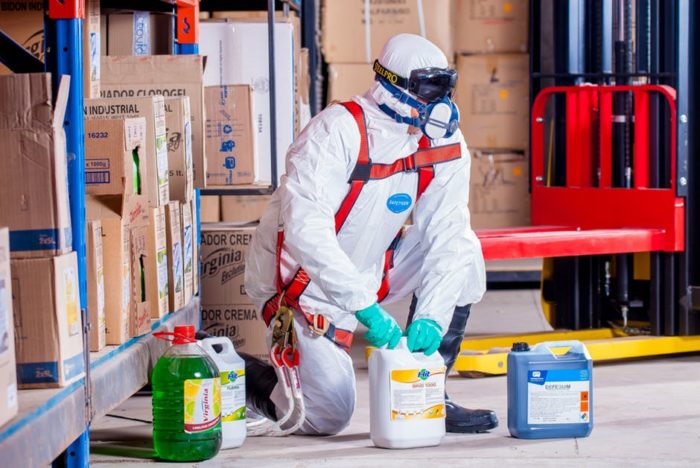
PPE AND WHMIS
Personal protective equipment (PPE) is equipment or clothing worn to minimize exposure to hazards in the workplace.
PPE does not remove or reduce workplace hazards and does not replace effective engineering or administrative control methods such as substitution or ventilation. PPE is the last line of defense when the hazard cannot be removed or controlled adequately. Proper selection, use and care of the equipment are vital to provide the proper level of protection.
Before you handle, use, work close to, store, or dispose of a hazardous product, you must be educated and trained in how to work with that product, including the PPE you need to wear, for example, an apron, coveralls, goggles, a face shield, gloves, a respirator, or boots.
Hazardous materials frequently found in the workplace include cleaning agents such as bleach and grease removers, toners, paints and solvents, fuels, and lubricants.
1. Selecting, Using, and Maintaining PPE
Employers are responsible for selecting, providing and fitting of appropriate PPE for the hazardous exposures in the workplace. Consult the Safety Data Sheet (SDS) for advice. Consider how the materials will be used, the quantity used, and the types and duration of exposure. Ensure that there will be an adequate margin of protection in case of a spill or other emergency.
Ensure that the PPE provides a good fit. The PPE should not impair dexterity or flexibility or create safety issues such as entrapment.
2. Training
Employers must ensure that employees are trained to properly use, maintain and store PPE. Employees also must:
- HAVE training with “hands on” instruction in the fit, use and maintenance of assigned PPE.
- UNDERSTAND the limitations of the PPE and know what to do in the event of exposure or device failure (e.g. how to use emergency showers, eyewash stations, first aid).
- UNDERSTAND when to discard/replace PPE (e.g. end of shift, every hour).
- REPORT any missing or defective devices to the supervisor.
What must you do to protect yourself?
- Check the label on the container.
- Check the Safety Data Sheet (SDS) to see what the hazards are, how to handle the product safely, and what specific PPE is required.
- Know where to find SDSs at your workplace
- Know where to look
- On an SDS information on PPE can be found under Section 8 – Exposure Controls/Personal Protection
- On the MSDS for information on PPE – usually in Section 7, Preventive Measures, of a 9-section MSDS.
- Wear the exact type of PPE specified in the SDS for the hazardous product you are working with or around.
